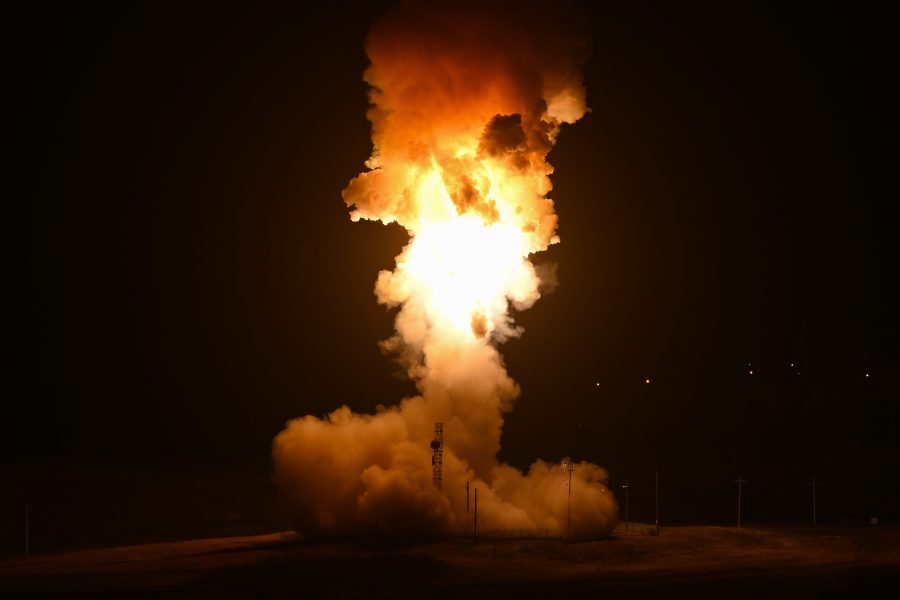An unarmed Minuteman III intercontinental ballistic missile flying over the Pacific Ocean was effectively terminated by Space Launch Delta 30 on Nov. 1.
The termination occurred at 12:06 a.m. Pacific Time, due to an unexpected anomaly that emerged during the test launch at Vandenberg Space Force Base, Calif.
An anomaly refers to any unanticipated event during the test, and could stem from various factors associated with the operational platform or the test equipment, Air Force Global Strike Command stated in a release, noting that the test produced valuable data before the termination.
A spokesperson at AFGSC told Air & Space Forces Magazine that more MM III test launches will be held next year, as Vandenberg is the sole Space Force Base that conducts such ICBM tests in the U.S.
An investigation to pinpoint the cause is being assembled by organizations including AFGSC, the 377th Test and Evaluation Group, the 576th Flight Test Squadron, Space Launch Delta 30 Safety Office, and the Air Force Nuclear Weapons Center.
Vital data will be gathered through the analysis to correct any errors with the weapon system to guarantee the sustained reliability and precision of the MM III, the release added.
The inception of the Minuteman weapon system dates back to the late 1950s, with the deployment of Minuteman I in the early 1960s.
The LGM -30 Minuteman III has been operational since 1970, characterized by an enhanced range, rapid retargeting features, and the capacity to deliver up to three reentry vehicles to multiple targets with exceptional precision.
The 400 MM III currently in service across the continental U.S. are expected to be replaced with the LGM-35 Sentinel, formerly known as the Ground Based Strategic Deterrent (GBSD).
In September, Pentagon acquisition chief William LaPlante said the Air Force is speeding up tasks in the Sentinel project to meet the crucial initial operational capability date of September 2030.
Following that, the Air Force announced its $996 million contract with Lockheed Martin to produce the MK21A reentry vehicle for the Sentinel intercontinental ballistic missile by 2039.
The incoming Sentinel ICBM, designed to be easier to maintain than the MM III, allows easy upgrades as technology develops between now and 2075, the missile’s planned retirement date.
This new weapon system is the most cost-effective option for maintaining a safe, secure, and effective land-based leg of the nuclear triad, according to the AFNWC.
In recent years, China and Russia have actively engaged in advancing and improving their nuclear capable arsenals programs, including their ICBMs.
The Department of Defense claimed that China is developing new ICBMs, possibly capable of carrying conventional warheads.
If developed and fielded, “such capabilities would allow the PRC to threaten conventional strikes against targets in the continental United States, Hawaii and Alaska,” a senior defense official said at a briefing on Pentagon’s 2023 China Military Power Report.
Operational leaders from Minot Air Force Base, N.D., the sole installation hosting both Air Force legs of the nuclear triad, echoed the palpable threat posed by China.
In October, Russia also claimed its military exercise rehearsed a “massive” nuclear strike in response to an enemy nuclear attack.
According to reports citing the Kremlin’s statement, the exercise involved “practical launches of ballistic and cruise missiles,” including a RS-24 Yars intercontinental ballistic missile fired from a test site in Russia’s far east.
